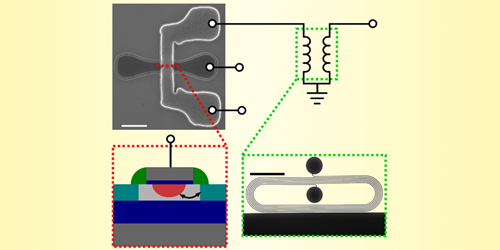Parametric Amplification for Silicon Quantum Devices
High-fidelity qubit readout is a key requirement for fault-tolerant quantum computation. For many quantum-computing platforms, this requirement means using parametric amplifiers to boost the ultra-low-power signals that represent qubit states; superconducting quantum computers, for example, typically use parametric amplifiers based on the nonlinear inductance of a Josephson junction. Now, Laurence Cochrane and his colleagues at the University of Cambridge and Quantum Motion Technologies, UK, demonstrate a parametric-amplification technique that uses the nonlinear quantum capacitance of a silicon quantum dot [1]. Unlike designs based on Josephson junctions, this new approach can be used in strong magnetic fields and can be more easily integrated with semiconductor qubit technologies.
Quantum capacitance is the capacitance of systems that have a low density of states, such as quantum dots. To demonstrate the utility of quantum capacitance in parametric amplification, Cochrane and his team formed a quantum dot from the channel of a silicon-nanowire transistor and coupled it to a thin-film superconducting microwave resonator. They modulated the dot’s quantum capacitance by varying the dot-reservoir potential difference, which caused a shift in the resonator’s frequency.
The team found that this frequency shift amplified signals reflected off the resonator by a factor of 2, but they propose an optimized circuit model that could amplify the signal 100-fold. Such a signal boost would make the amplifier’s performance comparable to established designs, while its robustness to magnetic fields could allow the design to be used in silicon-based quantum devices that require strong magnetic fields to operate. Ultimately, the design could increase the efficiency and scalability of the quantum readout chain in such devices.
–Rachel Berkowitz
Rachel Berkowitz is a Corresponding Editor for Physics Magazine based in Vancouver, Canada.
References
- L. Cochrane et al., “Parametric amplifiers based on quantum dots,” Phys. Rev. Lett. 128, 197701 (2022).




